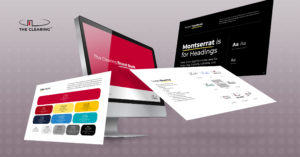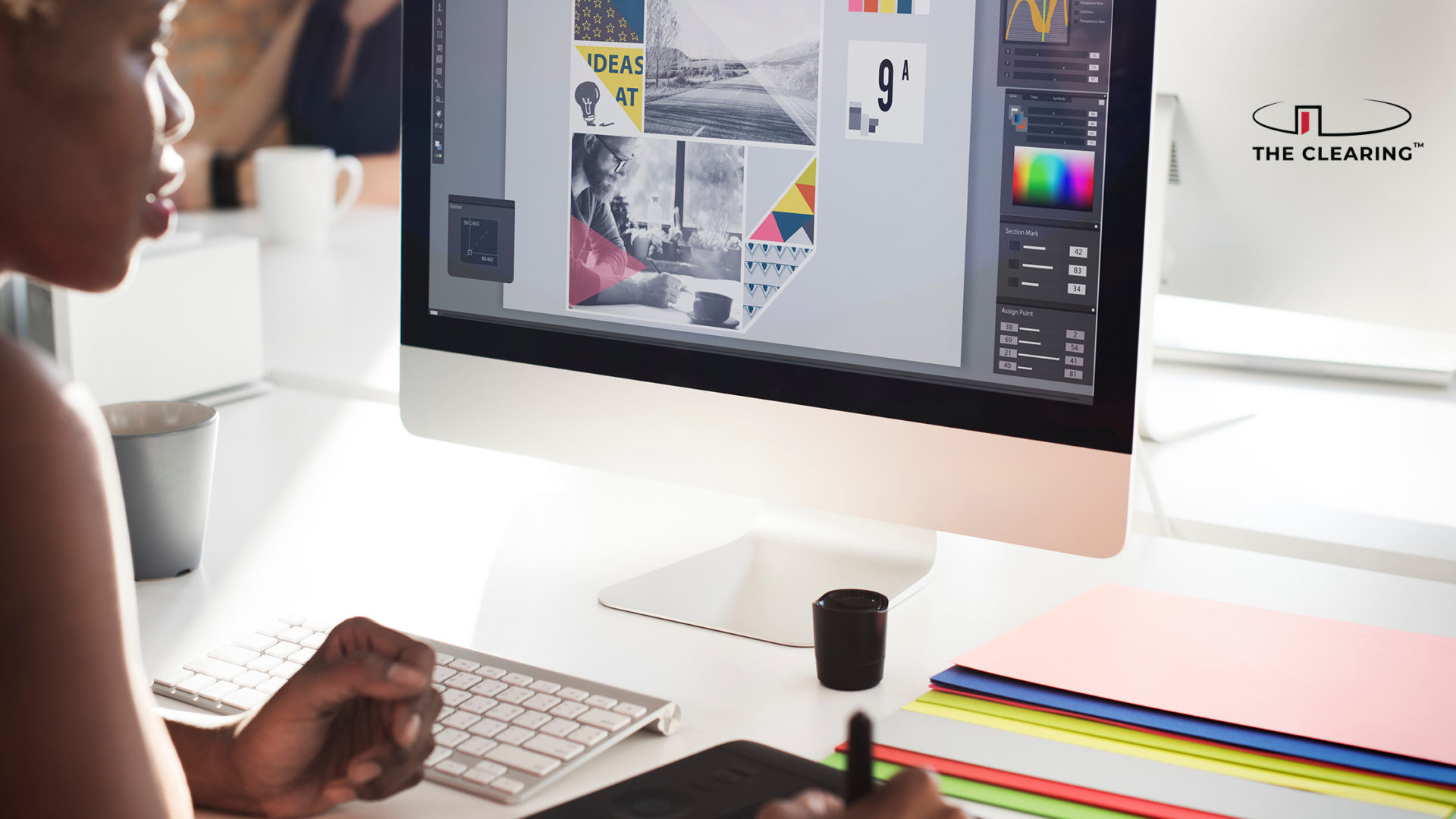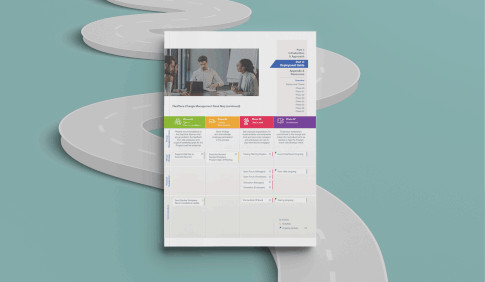At The Clearing we believe in the power of visual design. Our teams have found that creating a visual language can help to improve communication, build more meaningful solutions, and create organizational differentiation. That’s why we field a team of visual consultants – myself included – who are experts in the field of design.
Today, I’ll cover one of the building blocks of visual language: the design system. Read on to see how a strong design system not only differentiates organizations but makes work easier across teams.
What is a Design System?
A design system is simply a repository of design elements. These include visual assets such as colors, icons, patterns, and photography, in addition to the personality and tone of voice used in communications. All of these elements are typically part of a larger brand book or style guide that includes usage instruction, design best practices, and shared knowledge regarding how the brand is portrayed.
The key to a strong design system boils down to one element: consistency. That includes what you use (i.e., don’t mix old design elements with new) and how you use it (i.e., following the rules in the style book).
A strong design system is so central to brand performance that entire marketing campaigns are built around them. Remember UPS’ “What Can Brown Do for You?” campaign? This wildly successful campaign was built around the shipping giant’s consistent use of color – in this case, the iconic brown that adorns the company’s trucks and uniforms.
Here’s what UPS’ then-vice president for brand management had to say when the campaign launched back in 2002:
“At UPS, brown is more than a color — it’s a tangible asset that people associate with all the things that are good about our brand. This campaign extends that association to the scope of new, and perhaps lesser known, capabilities we offer the marketplace.”
Now, imagine if UPS hadn’t spent years using a consistent design system. A campaign that ran for eight full years would’ve likely never come to fruition and the company may have missed out on the benefits. It’s a great lesson for all brand and design leaders to point to when explaining the impact a strong design system can have on their organization.
In addition to top-line advantages like driving marketing campaigns and simplifying workloads for designers, a strong design system also benefits team members who communicate on behalf of the brand. For example, with a consistent and clear style guide, a Human Resources team can confidently implement brand elements into recruiting materials. Or, your social media manager can use a tool like Canva to add on-brand visuals to social posts without requiring additional time from the creative team.
At The Clearing, part of my job is to facilitate that consistency, making it simple for our teams to work within the brand as desired. That means ensuring the system is always up to date with the most recent branding elements, as well as making sure all members of TC’s visual team are using them properly. I also make sure everyone knows where to go for the latest design materials and that our repository is properly structured so designers can pop in and out of work without hiccups or delays.

How Does a Strong Design System Impact an Organization?
At the end of the day, a strong design system, used consistently, saves time and headaches by removing guesswork and rework. This allows team members to focus on the work at hand instead of reinventing the brand for every deliverable.
When it’s all done properly, we can create products and digital experiences that are consistently on-brand. These may seem like small things, but imagine if your favorite brand regularly changed color palettes. By doing so, that brand would fail to take advantage of a powerful driver of brand awareness and erode people’s ability to quickly identify it in a crowded market.
Tips for Evaluating and Codifying your Organization’s Design System
If this has left you wondering where your organization’s design system stands or if it’s being used consistently, here are a few simple steps to get you on the right track.
- Identify your brand’s attributes. Review the style guide (if it exists) and collect more information on your brand’s identity, such as the elements mentioned at the beginning of this post. The key is to ensure you secure all existing elements.
- Conduct an audit on what you already have. There is often redundancy and mix-up in terms of past and present assets. For example, ensure your logo is up to date, that you have the correct color palette, etc., so that anyone using the design system starts out on the right foot.
- Create a visual asset library. Once you identify the correct brand attributes and complete your audit, create a visual asset library where all of the elements of your design system will live. Ensure all team members have access and know this is the only place to find current design elements. Consider reviewing the library annually to ensure the assets still meet the needs of your brand.
- Define and refine. Determine the structure and naming conventions of the elements within the library. Think about how the end user (not always a design professional) will use the library and refine from there.
- Be consistent. Periodically review brand and communication materials to ensure correct usage and regularly update your organization on design system changes to drive consistent use.
If you’d like to learn more about how to leverage a strong design system for your organization or brand – or simply want help on evaluating your current one – reach out to me at amanda.irwin@dev2021.theclearing.com. I’d love to explore how The Clearing can help.


